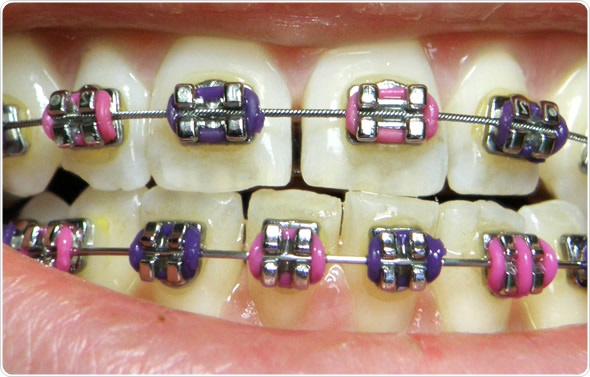Your Overview to Cumming Invisalign: Straightening Teeth with Style and Convenience
Comprehensive Overview to Orthodontics Treatments for Correcting Dental Misalignments
In the realm of orthodontics, the trip to achieving a flawlessly aligned smile involves a myriad of treatments customized to correct dental misalignments. From standard dental braces to unnoticeable aligners and also surgical options, the field of orthodontics offers an array of solutions to resolve varying levels of dental irregularities. Recognizing the intricacies of each procedure, including their mechanisms, benefits, and prospective downsides, is vital in making educated decisions concerning one's orthodontic therapy. As we navigate with the comprehensive guide to orthodontic treatments for dealing with dental misalignments, the complex details of each method will certainly unravel, shedding light on the course towards a functional and unified dental alignment.
Orthodontic Procedures Summary

Normal changes and tracking are critical components of orthodontic therapy to guarantee development is on track and to make any type of required modifications along the method. By going through orthodontic treatments, clients can not only attain a straighter grin but likewise boost their total dental wellness and function.
Conventional Braces: Exactly How They Function
When thinking about orthodontic treatments for oral imbalances, typical braces stand out as a tried and true method for dealing with teeth positioning. Typical braces are composed of braces, wires, and bands that function with each other to apply constant stress on the teeth, progressively relocating them right into the wanted alignment.
As pressure is used to the teeth via the dental braces, the bone bordering the teeth is reshaped to sustain the new tooth positions. Clients will certainly need routine modifications at the orthodontist's office to ensure the braces proceed to use the appropriate pressure for efficient teeth motion.
Unnoticeable Aligners: Pros and Disadvantages
These clear, tailor-made trays are practically unseen when used, making them an enticing choice for people seeking an extra cosmetically pleasing orthodontic treatment. People can eliminate the aligners prior to consuming or brushing their teeth, minimizing the threat of food obtaining stuck in the home appliance and streamlining the cleansing process.

Surgical Orthodontic Options
Surgical treatments in orthodontics existing practical options for attending to complex oral imbalances that may not be successfully fixed via standard orthodontic therapies. While unseen aligners and standard braces can fix many orthodontic concerns, certain cases call for surgical treatment to attain ideal outcomes. Surgical orthodontic options are normally recommended for serious malocclusions, considerable jaw discrepancies, and instances where the underlying bone structure needs adjustment to accomplish proper placement.
One usual surgical orthodontic procedure is orthognathic surgery, which entails rearranging the jaws to correct functional problems such as problem eating or talking. This surgical procedure is frequently performed in partnership with an orthodontist that helps align the teeth prior to and after the procedure. Surgical orthodontics might also include procedures to expose affected teeth, remove excess periodontal tissue, or reshape the jawbone to develop a much more unified facial account.
Before considering surgical orthodontic choices, patients go through a thorough evaluation to establish the requirement and prospective benefits of such interventions. cumming orthodontics. While surgical procedure might appear overwhelming, it can substantially boost both the feature and looks of the smile in cases where conventional orthodontic treatments fail
Retainers and Post-Treatment Treatment

Post-treatment care entails following the orthodontist's guidelines diligently. This might include appropriate dental hygiene methods, going to follow-up visits, and putting on the retainers as prescribed. Failing to abide with post-treatment care guidelines can cause relapse, where the teeth gradually relocate back in the direction of their original positions. Consistent retainer wear, good dental hygiene, and normal dental check-ups are crucial for maintaining the results attained with orthodontic surgical treatment and guaranteeing the long-term security of the corrected dental alignment.
Verdict
To conclude, orthodontic treatments provide numerous options for dealing with oral misalignments. Typical dental braces use metal braces and cords to shift teeth right into proper placement. Undetectable aligners provide an even more discreet choice but might not appropriate for all situations. Surgical orthodontic options are offered for more serious imbalances. Retainers are frequently made use of post-treatment to keep the brand-new positioning. In general, orthodontic treatments can efficiently improve dental wellness and aesthetic appearance.
As we navigate with the thorough overview to orthodontic procedures for dealing with oral imbalances, the elaborate details of each technique will unravel, shedding light on the course towards a functional and unified find out oral placement. - cumming aligners
One of the most common orthodontic therapies is the usage of braces, which consist of steel brackets and cords that apply mild stress to gradually change teeth right into the wanted placement.When taking into consideration orthodontic treatments for oral misalignments, standard braces stand out as a time-tested approach for fixing teeth positioning. Additionally, unseen aligners may not be ideal for complex orthodontic issues that call for more considerable teeth motion, as they are visit this site usually recommended for moderate to modest situations. Retainers are custom-made orthodontic gadgets created to hold teeth in their corrected positions after the conclusion of orthodontic therapy.